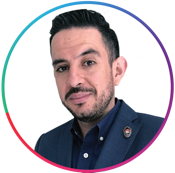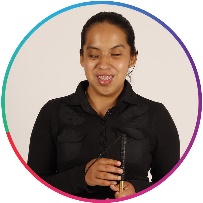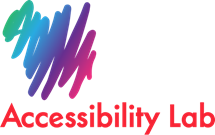This month, we are taking some time to catch up with our UXFund grantees, and learn a little more about their organization.
Q&A with Accessibility Lab
Q: How did you become involved with this project? What are your motivations for this work?
A: I became involved when I saw the challenges and barriers that my friends with disabilities had using the internet. My motivation is to increase awareness about digital divide and inclusion of people with disabilities, so they can have equal access to Information and Communication Technologies and better opportunities in education and employment.
Q: How large is your team? Who else is working on the project (full-time, part-time, etc)? How often do you connect and via what channels?
A: Normally we are 6 people:
 |  |  |  |  |  |
|---|---|---|---|---|---|
Nancy Reyes | Gabriel Fernández | Alberto Arellano | Cris Bori | Pedro Bori | María Martínez |
The developer and I are full time and the rest of the team is part time, depending of the budget and projects we have. Sometimes we have more people on the team, for example, more designers, more developers and more people with disabilities (visual and motor disability). We connect every day. Almost all is online, by mail, by phone, whatsapp, Jitsi Meet, etc. Sometimes we meet physically but not always is necessary.
Q: Why do you think it’s valuable to engage with users?
A: Because from the accessibility perspective, users with disabilities will offer the best feedback to understand their experience in the usability and accessibility of any digital content. A designer or developer will understand the importance of their work and see the difference between being able to use it or not at all independently.
Q: What is the best way for users/trainers/tool teams to connect with your team?
A:
- USERS: testing and sharing feedback about the webpage, app or tool.
- TRAINERS: being updated about international standard and new technological solutions.
- TOOL [Developers]: we can work with any tool to see if it is accessible or not, from a technical and non-technical perspective.
Q: What role do trainers play in the feedback loop? How do you view trainers?
A: Trainers have a very important play because they share knowledge about international standard, best practices, solutions and other relevant information so more people can develop accessible websites and apps.
It is not just about increasing awareness about the digital right of web accessibility, but to offer solutions, tools and knowledge to improve web accessibility and create accessible websites and apps in the future.
Q: Has your team ever used personas to inform design or development?
A: We always use personas to test accessible websites or make audits and offer feedback. Our personas are most commonly blind people and people with motor disability.
Q: Where can people look to learn more about accessibility?
- Web Accessibility Campaign
- Web Content Accessibility Guidelines (WCAG) 2.1
- Accessible Rich Internet Applications
Q: What are the top five things to consider when designing a site or tool with accessibility in mind?
- Provide text alternatives for any non-text content.
- Provide alternatives for time-based media, like transcripts, captions, audio-descriptions and sign language.
- Make all functionality available from a keyboard.
- The visual presentation of text, images of text and user interface components must have enough color contrast.
- Make forms with accessible structure and labels relationships for users with assistive technology.
Q: What are the future plans for your team?
- Continue with our consultant services and trainings for private sector, government and universities.
- Free or very low-cost trainings for final users.
- Evaluate the accessibility of websites and apps considering the experience of users with disabilities as an awareness campaign.
- Create a digital accessibility observatory.
- Start providing digital accessibility certification:
- To companies and government websites (through a civil organization)
- To individuals like designers and developers (through IAAP)
- Continue with networking sessions inviting people and companies that want to collaborate.
- Create an alliance with the federal office that reviews the implementation of accessible web content with the purpose to certify each government office with the law requirements of web accessibility.
- Create video interviews and infomercials with the testimonies of people who have had the benefits of the web accessibility.
- Obtain the certification from the International Association of Accessibility Professionals (IAAP) for all their team members:
- Certified Professional in Accessibility Core Competency (CPACC) for administrative staff and,
- Web Accessibility Specialist (WAS) for technical personnel
- Start providing information and content for other countries around the world.
- Organize the first “Global Festival of Universal Design and Digital Inclusion”.
- Finish our online course about Web Accessibility in Spanish.



